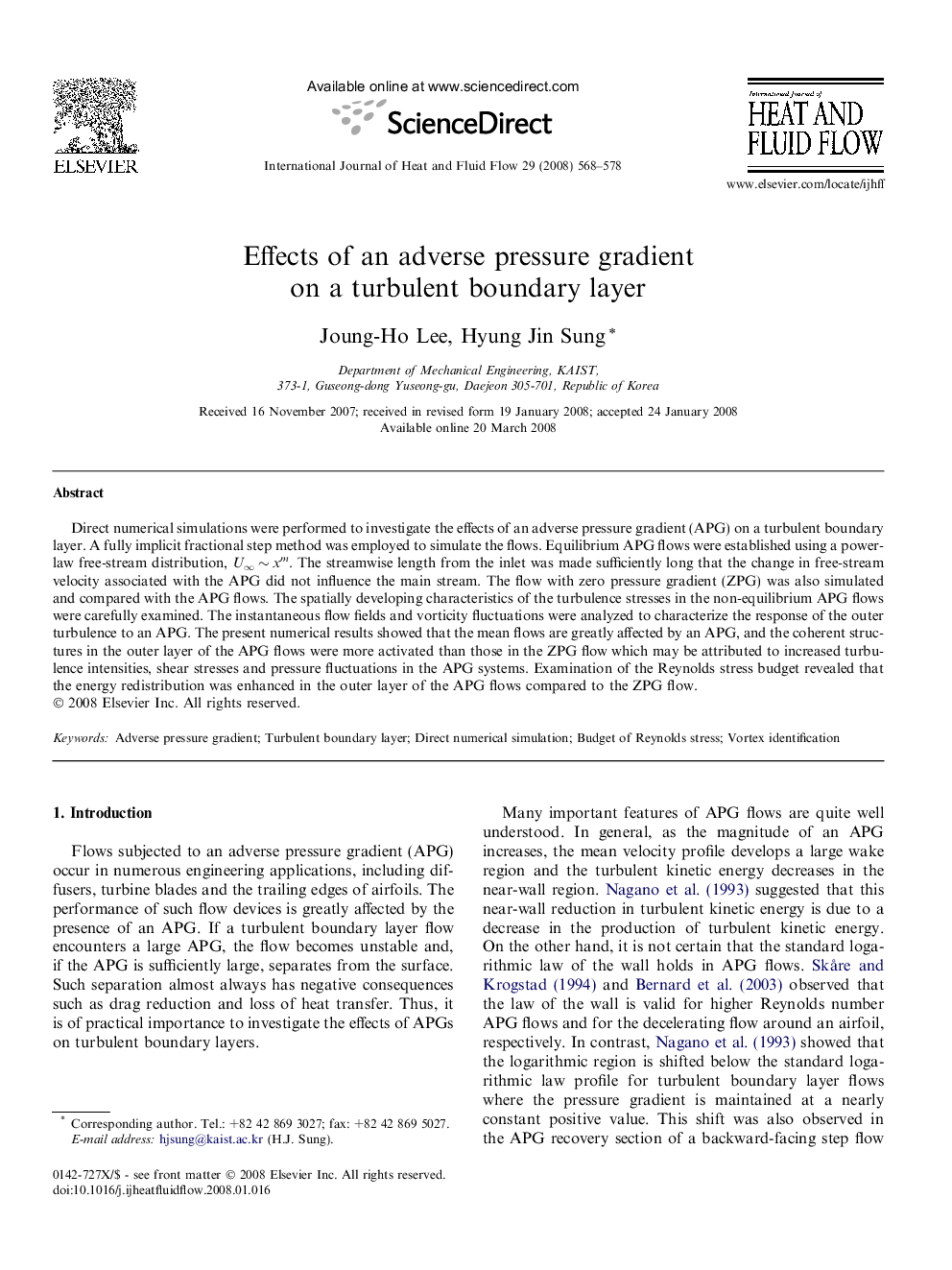| Article ID | Journal | Published Year | Pages | File Type |
|---|---|---|---|---|
| 655916 | International Journal of Heat and Fluid Flow | 2008 | 11 Pages |
Abstract
Direct numerical simulations were performed to investigate the effects of an adverse pressure gradient (APG) on a turbulent boundary layer. A fully implicit fractional step method was employed to simulate the flows. Equilibrium APG flows were established using a power-law free-stream distribution, Uâ â¼Â xm. The streamwise length from the inlet was made sufficiently long that the change in free-stream velocity associated with the APG did not influence the main stream. The flow with zero pressure gradient (ZPG) was also simulated and compared with the APG flows. The spatially developing characteristics of the turbulence stresses in the non-equilibrium APG flows were carefully examined. The instantaneous flow fields and vorticity fluctuations were analyzed to characterize the response of the outer turbulence to an APG. The present numerical results showed that the mean flows are greatly affected by an APG, and the coherent structures in the outer layer of the APG flows were more activated than those in the ZPG flow which may be attributed to increased turbulence intensities, shear stresses and pressure fluctuations in the APG systems. Examination of the Reynolds stress budget revealed that the energy redistribution was enhanced in the outer layer of the APG flows compared to the ZPG flow.
Keywords
Related Topics
Physical Sciences and Engineering
Chemical Engineering
Fluid Flow and Transfer Processes
Authors
Joung-Ho Lee, Hyung Jin Sung,
